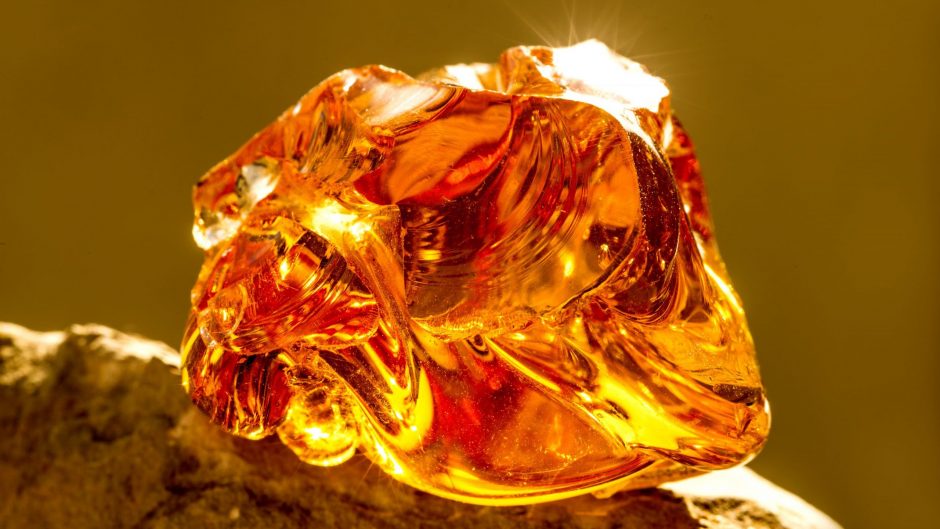Just like the interest in amber itself, its many names are related to different regions and cultures of the world, dating back to ancient times.
The Romans called the golden stone lyncurium, or ‘lynx urine’, as according to one of local legends, amber was supposed to come from the fossilized urine of this big cat. What is more, in Latin the name succinum was used as well, literally meaning ‘tree sap’. The Egyptians called amber sokal, while the Persians called it caruba, translated as ‘famous thief, golden thief’.
The Arabs, on the other hand, use the term anber, meaning ‘sperm whale’. The stomach secretion of this animal was used to produce an expensive fragrance – ambergris, whose smell probably resembled the balmy smell of burnt amber. Futhermore, since both amber and ambergris were found in the sea, the Arabs believed that both came from the bottom of the sea (from undersea plants, coagulated sea foam or droppings of great birds that fed on fragrant herbs).
The Germans called amber a ‘burning stone’, or brennender Stein – hence probably the Polish word for amber (Polish bursztyn, German Bernstein). The Slavic name for amber, jantar, comes from the Phoenician jain-itar, which means ‘sea resin’. In Lithuanian, gin taras is an amulet, an object used for protection against evil. The term gen tar was also used in the language of the former Prussia.
It is worth mentioning yet another name – electron, or ‘stone that attracts’. This is the Greek name for amber, from which gave origin to the word electricity. It was in ancient Greece that it was first discovered that the ‘sacred stone’, as amber was sometimes called, rubbed with cloth has attracting properties. However, as the phenomenon was impossible to explain, it was considered to be magic. This meaning is also found in Syrian naming, where harpax means ‘to pull, to steal’, in Danish naming, where raf means ‘to kidnap, to lift’ and in Swedish naming, where raffen means ‘to grab’.
Chinese sculptors, before reaching for Baltic amber – easier to process, but more rare due to its geographical remoteness, carved their famous Buddha figurines, animals or mandarin necklaces as early as in the 18th century in newly discovered Burmite, a kind of amber available in neighboring Upper Burma. Similar sculptures of oriental character were made on the island of Bali out of so-called Borneo amber. The origins of amber, in addition to resinating pine, poplar and cedar, were also attributed to animal waste, greasy sweat of the sea or soil, or more precisely in sticky, fibrous matter called bitumen.
The approach to amber in the Kurpie region is an interesting folk curiosity. There, it was not only treated as a gift of nature, but was also considered to be a companion in all human worries and joys. The Kurpie folk did not immediately dispose of the amber they found or dug up – they hid it for rainy days: urgent needs or simply to make necklaces for their daughters. They differentiated between several types of amber. The dowry amber was impressive, the daughters received it on their wedding days. The currency amber was exchanged for goods, food products or everyday items. Tax amber, in turn, functioned as money – amber nuggets, and later also rolled amber was paid in times of crisis, when other currencies were losing their purchasing value. Sometimes amber products were also used to decorate home interiors. Decorations such as a chalice – a decoration in the shape of a cone made of amber nuggets, straw and pine cones, or a “spider” made of eight amber ropes, each about 120 cm long, joined together with one large transparent bead, were often attached to the ceiling.
Even today, about two hundred folk names are used in Polish to describe the “gold of the Baltic Sea”. It is worth quoting Kashubian terms such as bursztin, jantar or amber, borrowed from other languages, as well as native names such as zółti kam, diamant Kaszebów or precious kaszëbsczi. And it is not surprising that amber is considered precious. Apart from its obvious material value, it also has undoubted healing properties. According to folk medicine, smoke from amber incense kills germs, and beads worn on the neck prevent sore throats and headaches, and strengthen the thyroid. Heated lumps of amber are used to remove foreign bodies (flies, pollen) from the eyes, and when crushed into powder administered as snuff cleans the sinuses and helps to get rid of rhinitis. Modern lithotherapy also uses amber (as a tincture) to treat thyroid, sore throat, hoarse voice and rheumatism. So, grab some amber… and cheers!

